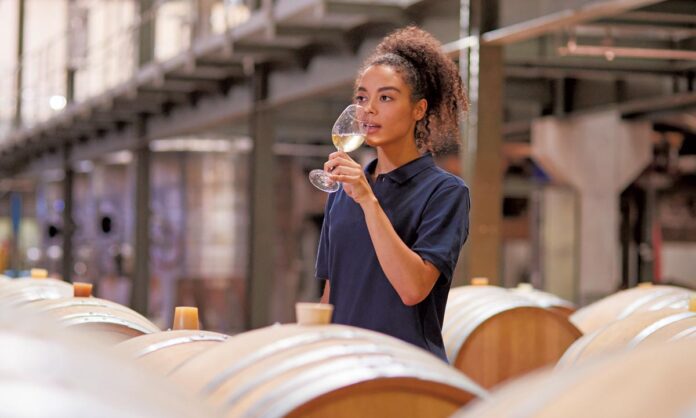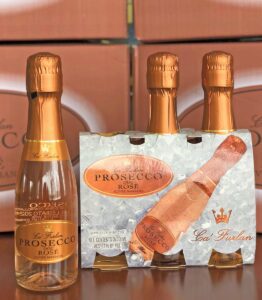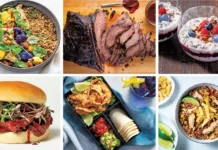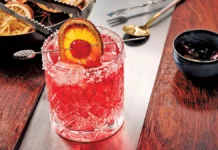
When I sat down to write this month’s column the world was not in the topsy turvy position we find ourselves in now.
Bartenders weren’t dumping out bottles of Russian Standard (yes, made in Russia and owned by Russian oligarch Roustam Tariko, who, according to one Bloomberg article, also owns Bank Russian Standard) and mistakenly pouring Stoli down the drain (the spirit we get here with a Stoli label is made in Latvia, w/global headquarters in Luxembourg, helmed by Russian ex-pat Yuri Shefler of SPI Group.).
Nor were governors of states and commonwealths like Ohio, New Hampshire and Virginia, ordering their ABC boards to pull Russian products from their shelves in protest of Vladimir Putin’s decision to invade Ukraine.
When I started drafting this column we were in the midst of, and on the cusp of, two major celebrations that may have raised a few eyebrows when they were first introduced; February’s Black History Month which began to be federally recognized in 1976, and Women’s History Month which falls in March and is intended as an opportunity to continue commemorating and encouraging the study, observance and celebration of the vital role of women in American history.
So, here we are. March. 2022. And… Plus ça change, plus c’est la même chose as the French quotation from Jean-Baptiste Alphonse Karr goes.
Europe – and the world – faces upheaval like it hasn’t since the end of World War II, while women are still at it, trying to get their beverage alcohol companies funded with the same level of success and revenue flowing in that their male counterparts see.
So, while pouring out Russian vodka may feel good, it has limited impact on the market. The United States’ 2021 vodka import statistics show that Russia is not a super-power on our shelves. According to DISCUS, imports of Russian vodka to the United States are down nearly 79 percent since 2011 and accounted for only 1.3 percent of total vodka imports in 2021.
So, instead of performative gestures that feel good but won’t really move the needle on business, how about if the wine and spirits industry and lenders/investors who cover this sector spend this month taking a good hard look at themselves and the disparate way female owners receive capital to grow their business.
It’s time to put those DEI commitments to work in ALL arenas of the business. It will increase profitability for all.
But first we must acknowledge our differences and move past our old ways of thinking. The intent to fund is good, but how we go about it must change if we are to succeed.
This is possible. Ghana’s first independent leader, President Nkrumah, wasn’t perfect, but in his 1961 London speech about freedom and African ideology he might as well have been speaking to a modern-day audience. We could stand to remember that The difficulties presented by questions of language, culture and different political systems are not insuperable; and apply it to the ways we do business.
We have all seen the numbers – we know that women-owned/minority owned businesses in the beverage alcohol space get a small percentage of funding that other founders see. Karen Hoskin, owner of Montanya Rum looks back a year to her role as a panelist at an industry convention when the current statistics indicated “women get 2-4% of venuture capital across the board and it’s harder in alcohol beverage. That number is more like 1.7-2%.” She continues, “The statistics were already terrible.”
So how do we get those numbers up? I don’t know. Do you?
Simply opening more female led funds isn’t the answer. It’s more complicated than that. While, as Hoskin notes, and other brand owners corroborated, walking into a room where you look familiar to those holding the purse strings moves you at least one step forward. But women have to be investing in our sector. And, primarily, they’re not. They invest in healthcare, tech, digital, beauty and wellness, family focused businesses and less so in alcohol.
What is it that stops them? Fear over regulatory challenges? Intense competition for market share? The perceived stranglehold our three-tier system wields over brand owners and their ability to grow and thrive at a reasonable-to-funders pace?
Is it the low valuations Women-owned companies receive because they don’t build their companies the same way a VC investor measures ROI?
Could be. Are those KPIs and timeline benchmarks for ROI a one-size fits all and a guarantee of a brand’s success. I’d argue not.
I’d also argue that it is time to see funding as a means to build something substantive, beyond the benefits of building up profits. A profit-plus model, as it were.
To achieve this goal those making investment decisions to support women-owned brands need to get comfortable with a different approach to doing things and embrace the fact they need to set growth expectations and targets in a whole new way. Take a look at the classic ways to evaluate a potential investment and assess valuation; is EBITDA all there is?
It’s not if the brand owner isn’t coming from the same starting place. If you’re a female founder who historically has had trouble getting funding and you’re bootstrapping it you probably haven’t had enough money to build out the beautiful stills and visitors center, or you may not yet have the assets and revenue to build a robust sales team and deploy them far and wide. At face value for typical funding this results in lower valuation, less money offered, and giving up a bigger piece of ownership in exchange for fewer dollars than really needed to get the job done right.
Isn’t it time to look at possibilities, experience, and measurable success through a new lens? I would suggest that a company that has seen revenue above $1MM for over a decade is as worth paying attention to as a new kid on the block with exciting aspirations to build the next big brand and have their logo whizzing past on a NASCAR racetrack.
Look at it this way – if you send your child to a Montessori school and they don’t learn to read until they are seven, but when they finally master it they are off the charts in terms of cognitive development while your other child goes to a traditional program, learns to read at five but at seven is still struggling with concepts, did the Montessori program fail? Or succeed? And, did the traditional program succeed simply because that’s the way it has always been?
Or are they two different and valid paths to success? Just like having healthy children, if we truly do want healthy brands in a healthy spirits industry that includes men and women, it is time to adjust our thinking on how we support them.
NEW SIPS TO TRY:
 Sourcing from some of the best vineyards in the Prosecco DOC, Veneto-based wine industry veteran Alessandro Furlan introduces Ca’ Furlan Prosecco DOC Rosé Brut ‘Cuvée Mariana, a rose Prosecco that garnered 90 points in Wine Spectator. This third generation winemaker branched off with his own Ca’ Furlan Prosecco label that not only warrants high marks, but also fits perfectly in all situations; The glera and pinot noir blend is available nationwide in both a 750 ml format and as 200 ml bottles sold separately or as a three-pack.
Sourcing from some of the best vineyards in the Prosecco DOC, Veneto-based wine industry veteran Alessandro Furlan introduces Ca’ Furlan Prosecco DOC Rosé Brut ‘Cuvée Mariana, a rose Prosecco that garnered 90 points in Wine Spectator. This third generation winemaker branched off with his own Ca’ Furlan Prosecco label that not only warrants high marks, but also fits perfectly in all situations; The glera and pinot noir blend is available nationwide in both a 750 ml format and as 200 ml bottles sold separately or as a three-pack.
Curious Elixirs’ tagline of shaken, not slurred is just the first indication you’re in for a great non-alc cocktail experience. Described as curiously complex booze-free cocktails they’re handmade with quality ingredients and no added sugar in New York’s Hudson Valley. Expressions like a sophisticated Cucumber Collins makes them sure to please, but making them stand out even more is that they contain adaptogens. Try them for yourself.























